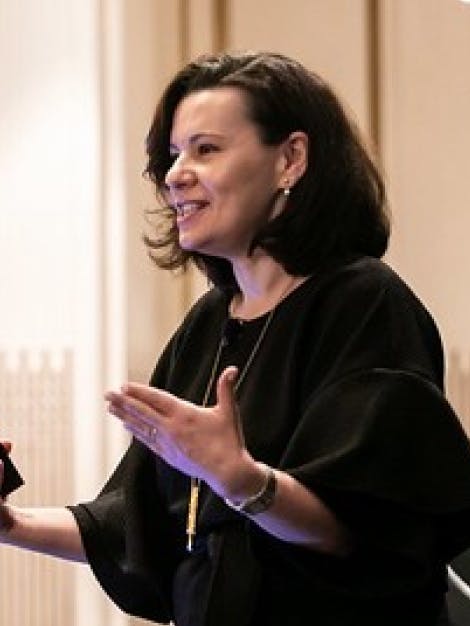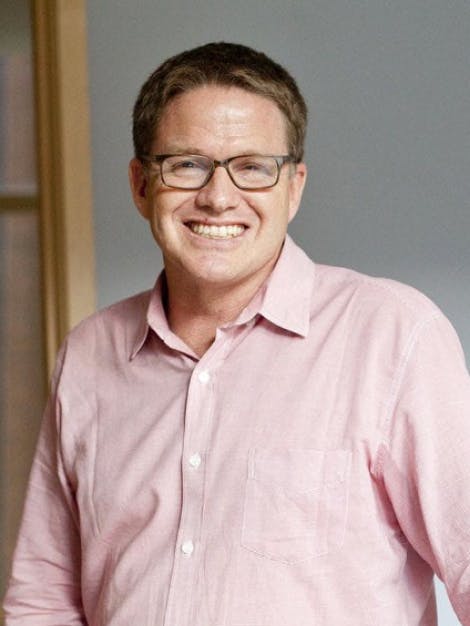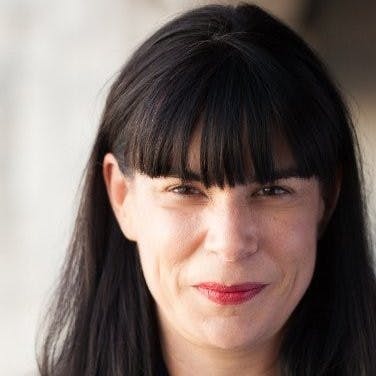Season 5 - Episode 5
The Key to Launching Products
Joff Redfern is an entrepreneur and Product leader. Currently, he is the VP of Product at Atlassian. In this podcast, Joff talks us through his product journey, product strategy, and the key to launching products.

“Question [00:00:56] How did you break into Product Management?”
Joff [00:01:00] I grew up with a father who was a serial technology entrepreneur, and he had started three companies. So at a very young age, I was exposed to that. In fact, his first job was to be a Software Developer for the IBM mainframe, which was something that was just introduced as he was getting out of college.
I remember very clearly going to a conference with him, and at that conference, Bill Gates – and I was younger at the time – but Bill Gates was introducing Microsoft Excel. I remember him introducing this and then bringing the team out on stage. What really struck me is two things. One, they had these cool leather jackets. So as a young guy, I was like, “Oh, these leather jackets are so cool.” But what also struck me is that just a small number of people, there were probably fewer than a dozen folks who had developed this piece of software, and yet it was so powerful and just the scale and the leverage. I found that so intriguing.
So when I graduated from college, I went into the industry. I tried to start a company; it failed, it failed pretty hard. And from that failure, I decided that I should probably try to educate myself more, but I was on the East coast of the United States, and there wasn’t a great way to educate myself. So I went and got an MBA at Cornell University, and then coming out of that, one of the things that really struck me is that if I wanted to be in the software industry and be great at it, that I really needed to be in Silicon Valley.

So I wound up moving to Silicon Valley, really following my dream to become a software product person. I wound up getting a job in Silicon Valley at a really high-profile startup. It was started by a guy by the name of Jim Clark. Jim was one of the first entrepreneurs to start three different companies worth a billion dollars – Silicon Graphics, Netscape, and, Healtheon.
So I wound up really not only getting to Silicon Valley but diving in with some of the people at that time. And this was a while back where they were shaking up the industry. So that’s, that’s how I got into Software and in Product Management,
And I wouldn’t just say it’s Silicon Valley anymore because I’ve spent some time in Beijing. I’ve visited there several times when we were opening up an office from LinkedIn. I think the technologists that are in Austin, New York, spots in Europe. I think these hotbeds bring people together. And when you can get in this environment where people around you really share that passion, it makes such a difference, because when I was growing up on the East coast, the community in which I lived and the places in which I was working, they didn’t share that same level of enthusiasm for it. So I love being where the people are that are talking about it and doing the most interesting and cutting edge work because that’s, that’s where you can learn.
And the other thing I would say to your point is, what’s unique about Silicon Valley – and again, other places where this is happening – is that there is a real culture of giving back. And it always surprises me, especially when I was growing up, it was actually relatively easy to reach out to someone, and it was successful that you would think, Oh, that person’s not going to give me the time of day, but that person remembers when they were in your position and they oftentimes not always, but oftentimes there’ll be like, “sure send me a note, and I’ll email you back with some answers, or I can meet you for 20 minutes, and we can chat through your questions.” So I really liked that about, about this area.
“[00:06:06] Before joining Atlassian, you were the VP of product at LinkedIn.”
Joff [00:06:12] I was at LinkedIn for seven years. I joined when it was about 450 employees, and then I left when it was 10,000. Right before the Microsoft acquisition, I wound up leading. I built out the mobile organization when mobile was brand new. In fact, when I first joined, no one really wanted to work on mobile because they didn’t think it was going to be the big thing. And I was like, no, no, no. I think mobile is going to be the big thing. I would love to lead that area. And sure enough, the mobile team not only grew, but we wound up really taking over the desktop team as well. And I wound up running the flagship, product at LinkedIn, working for the CEO, Jeff Wiener, who I had the opportunity to work with when I was at Yahoo as well. So I spent nine years working with Jeff and really learning a tremendous amount. He’s just an amazing leader.
After I left LinkedIn, I left thinking that I wanted to build another company, and I had an idea that I was tossing around with Reid Hoffman, who was the founder of LinkedIn. When I left, I wound up meeting the founders of Atlassian, and then I wound up falling in love with their vision more than the vision I had for the product that I was trying to build. It’s so nice to work for people that are product thinkers at heart. And this is true of founders Scott and Mike at Atlassian – like Jeff, who are deeply passionate about building great products.
It makes such a difference to work with someone that cares as much about product as I care about it because that’s why I get up in the morning. I’m a builder, and I love to build things. So I don’t want to have to explain to people what the importance of building products is. Instead, I want them to embrace and support me, and I’ve found that with the different products CEOs that I’ve worked for.

“Question [00:09:13] So what are some of the myths and misconceptions that you’ve seen working in different companies in Product?”
Joff [00:09:22] Oh boy, a few things. Especially when I was younger, I got confused around. Is this a solo act, or is this a team act when I’m building out Product? We grew up in Western society thinking or seeing and reading comic books or watching movies, and it’s always about that superhero. And that superhero is going to save the day, or you read up, you wind up reading about people like Isaac Newton. And you’re like, Oh wow. This one person sat underneath the tree, and an Apple fell on their head. And then, all of a sudden, they discovered relativity, and you think to yourself, Oh, that must be the way that I’m supposed to conduct my work. And it’s actually the opposite meaning -and I know this sounds obvious, but it really is a team act.
And you’re trying to figure out how to assemble the best possible team, but more importantly, what you’re trying to do with that team is create this trusted environment. When you have that trusted environment, you can start to practice what I would call creative confrontation, where you’re trying to take an idea and put it on a workbench. And then everyone is attacking the idea, but never the people. And that way, we can tumble that idea around, and we can chip off the edges, and we can and make it an even better idea.
If you look at some of the best products, they really are an expression of a small number of people who had diversity of thought. They worked very closely together. They trusted one another, I think, came out with great products. So you, if you ever read books about people who talk about this great journey and building a product, that’s often what you see as that creative confrontation.
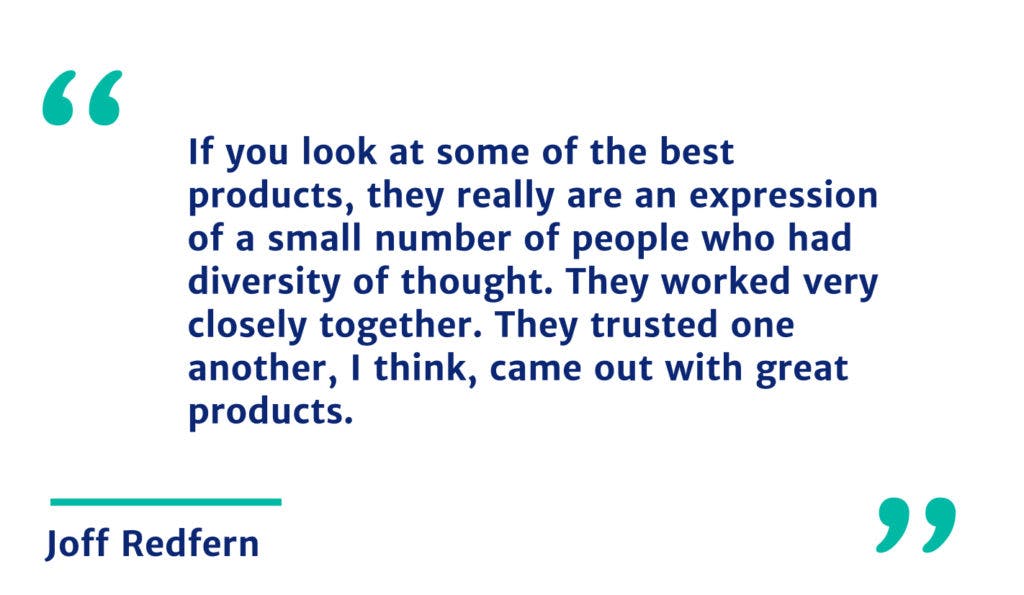
The second thing I would point out would be, in product we’ve been talking about this lean product movement for some time. Now we’ve gotten much better at that scientific process of build, measure, learn, and the scientific method and the loops that it creates. But I would tell you that the hardest and most important questions often require you to take a leap of faith in my experience. So instead of just using your left brain, you’ve got to use your right brain. Think about in your personal life- do I believe in God or not, will I get married to this other person or not. You don’t sit there with a spreadsheet and try to calculate the odds. You use data, but then, in the end, we don’t have perfect data, and you have to make a decision.
I find that again, going back to some of the more strategic questions that I’ve faced in my career, that the data couldn’t tell us cleanly, what we should do, and we needed to, we needed to make a leap of faith. If you make the wrong decision and you don’t follow your heart, there can be real consequences.
I remember watching this interview with the Intel CEO Otellini, who is the CEO back in the mid two thousand. And he was telling the story about how Steve Jobs came to him and said, Hey, we would like Intel to build the chip for this new phone we’re building, we’re going to call it an iPhone. So this was pre-2007. Otellini had all these people come back with all the data. And the data said, don’t do it. Like, don’t go into that market. And he said in his memoirs, it was like, basically, I knew in my gut that I should have been doing this. That right brain, if it had kicked in, would have kept Intel at probably the center, moving from the desktop over to the paradigm shift over to the mobile phone. And, of course, they missed out. If you ever plot the stock price of Apple versus Intel, you can see the story as it gets told by the market.
If you think about a product team and over the course of the year, especially a large product team like Atlassian or at LinkedIn, you’re going to make that team collectively, they’ll make thousands of decisions. But if you were to go back and say, well, what, which decisions really, really mattered? There are going to be a small handful of decisions, and they will have a business impact or a step function change in the product. So of those thousands of decisions, there’s only a small handful that truly will have an outsize impact. I would guess that some portion of that small handful of decisions will have to be made without perfect data. You’re just gonna have to come from your heart and say, hey, that was hard.
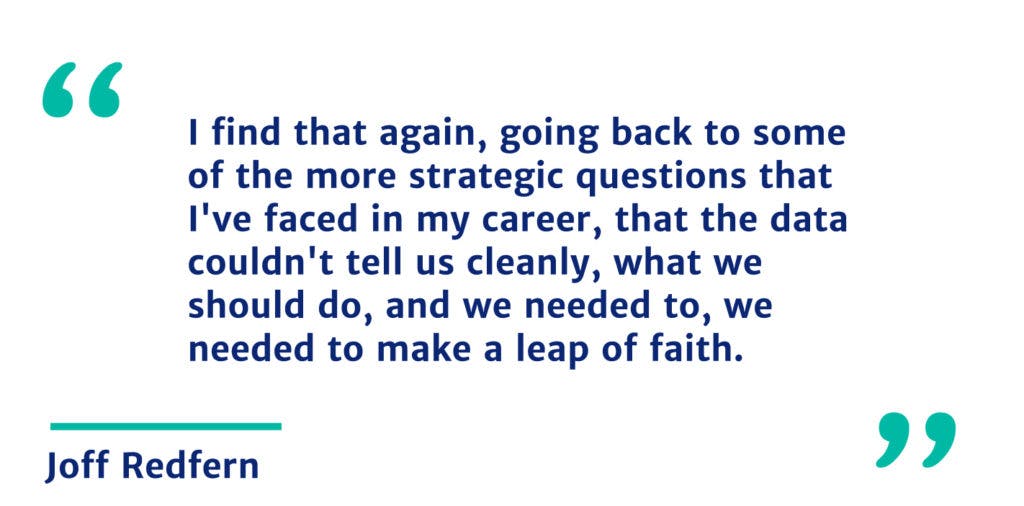
“Question [00:15:07] How do you go about making these decisions? What goes through your mind? ”
Joff [00:15:31] I would bring it back to this creative confrontation and diversity of thought. I could ask people about the crazy idea, who are like-minded, who, you know, are more of a yes person, and I’ll get one set of answers. But if I go to the people that tell me that idea is crazy and stupid, and it won’t work, those are the people to spend time with. And it’s like, well, let’s unpack it. What am I missing? What am I not seeing? And then when you feel comfortable that you’ve heard the broad range of possible outcomes or reasons why you should or shouldn’t do something, it’s in that, that you run your balance.

Another thing that’s helpful is when a team has principles around how they’re going to conduct their work. One of the teams that I work closely with is the Trello team, and Trello is an amazing product. It has a very high C-SAT (customer satisfaction score), especially when you consider it to be a productivity app where C-SAT scores tend to be much lower than they are on the consumer side. And they build very thoughtful products. And you go in, you talk to that team, and you’re like, well, why is that? And part of it is the founders of Trello, Michael Pryor, Justin, these people that are really part of that founding team; they spent time when they were scaling to write down principles of what Trello stands for. And those are the product principles that help guide as they scaled up. I would say another way to help you make those decisions when you have to take the leap of faith is if you have principles about what you stand for, sometimes that’s easier to lean on. That’s part of the vision, or that’s part of the mission, and therefore we’re going to go in this direction.
“Question [00:17:34] What is your day-to-day like?”
Joff [00:17:45] I would say at the highest level I’m trying to balance two things, build a great business and build a great product. And build a great business, the success metrics there are for us specifically, it’s growth in revenue. So year over year growth rate in revenue of monthly recurring revenue to be even more specific. Then on the product side, successes are you loved, so do you have a high customer satisfaction score? Do you have an NPS that is high? Meaning that word of mouth would be referring to your services, and there are other metrics that we use there, but essentially I’m trying to every day. I’m trying to move those two things along as I’ve become more senior. My role, unfortunately, takes me further away from the day-to-day details of actually building the product.
I find myself doing more general management, pieces of it. Do we have the right team? Do I have the right strategy which I do enjoy? But again, at the end of the day, I’m a builder. I love to be down tinkering and in the product itself.
To be very specific around what my day to day looks like. One of the lessons I learned from Jeff Wiener was once I was complaining about not having enough time to do something, and he’s like, well, let me open up your calendar. Let’s take a look at it. And he’s like, you are your calendar. And we started to go through meetings, and he’s like, why, why, why, cancel, cancel, cancel. And then he said, wait, where’s the work-time you, you personally will need to be doing work too.
So if you don’t put it in there, you’ll keep on doing what you’re doing and working at night. I’ve devised a little simple system that me and my EA use, and she color codes all of my time based upon six different things. So meetings might be for the benefit of moving the business, benefit of moving the product, for acquiring and growing talent. There’s work time. There’s personal time; there’s craft time. So I have these six things I’m trying to optimize for, but it’s a lot of what a typical product leader would expect. I have demo trusts to review products. I have business reviews. I have one-on-ones, stuff like that. The big thing that if you remember nothing else from what I said, I would encourage people to block personal work time on the calendar.

And for me, that color is yellow. So when I wake up, if I look at my calendar and I see at least one or two blocks of yellow, I get very excited. If I see no blocks of yellow, I’m unhappy because that means that I’m going to go back to back jam through my day. And then at that evening, I’d need some time, because I do have personal deliverables that require me to be thoughtful and provide answers and so forth.
This isn’t about trying to micromanage every moment. I don’t go and every week or day, look at the percentage of time; it’s there as a general guide. And then if I feel like life is getting out of control at work, that’s when I’ll say to my EA, Hey, why don’t we take a look at the percentage of time I’ve been spending in each of the six areas over the last month. And then sure enough, whenever we do that exercise, I’ll notice some big imbalance. It’s like you didn’t block any personal time, or you didn’t block any work time, or you had way too much business time and not enough product time. Then those are really helpful for me. I’m like, Oh, I get it. That’s why things feel off. They don’t feel right.
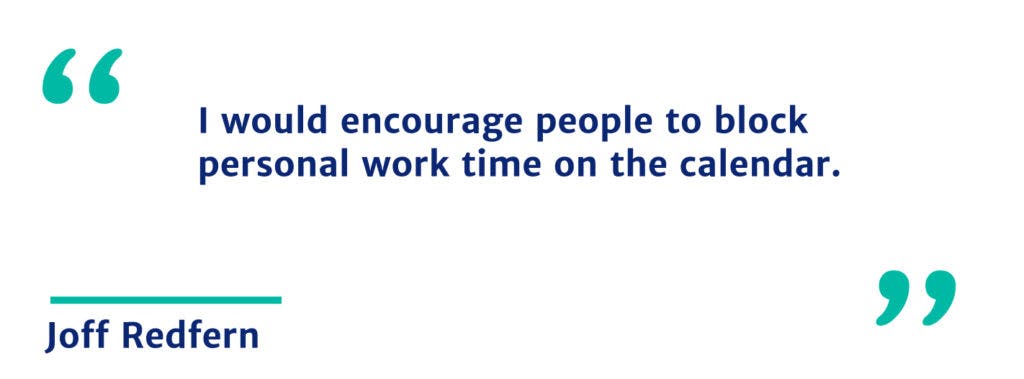
“[00:22:19] One of the things that I really appreciate is when people say no to attending certain meetings. Of course, you want to find out what’s going on and be there, but I know it takes so much courage. And then if you realize that actually things can happen and you don’t have to have a final say, that’s when also other people start feeling more empowered”
Joff [00:22:45] For sure. I think saying no to stuff that you don’t need to, or pushing it to the person who really should be making the decision is like, thanks for inviting me. That’s probably the best decision to make as an example. I think that defaulting to 30 minutes is really good. I find that the constraint of time forces us to be more, more focused. So I really appreciate that we have a Heads of PM meeting that we run every week, and it has all of the most senior leaders across, out last season. And it’s a 30-minute meeting, and we are focused on the craft of building great products and how to continually improve that craft. Every so often someone will be like, this is a great meeting, we should extend it to an hour. We’re like, no, it’s 30 minutes because it’s lightweight and it’s to the point, and we get lots of stuff done when we need to in that meeting.
Check out: Time Management Tips For Product Managers: How to Prioritize Your Work
I made this realization a number of years ago that the first product that you build as a product leader in the team or the company that you’re setting up. And I started using this analogy of a shipyard, and I was saying, look, the ships, which are products, can only be as strong as the shipyard that produces them. And when you have that mental map, you start to think to yourself, okay, well, what kind of ships do I want to launch? Because if I want to move oil between continents, millions of gallons of fuel that I’m going to need to be really great, the team’s going to have to be awesome with on massive scale, heavy sheets of steel welders that are super competent, but if I’m trying to win America’s cup, then my team better be awesome with technology.
We should have some aviation specialists because the boat actually works more like a plane than a boat – they better be good with carbon fiber because they need these lightweight materials. When you start to look at that organization or that team that you’re building as your shipyard, that investment of time that you put into it and the thoughtful decisions that you make there, those are gonna impact the output of the shipyard.

“Question [00:25:45] How do you learn and what works for you?”
Joff [00:25:59] I love learning; there are things that I’m trying to learn in my personal life. And then there are things that I’m trying to learn in my work life. So I’ve always got those two things going on at once. I am most definitely hands-on; let’s just start doing it kind of a person. Sitting in a classroom for huge stretches of time, versus just going out in the field and then doing something and failing and learning that way – I gravitate more towards that kind of experience. I would say on the work-life, I always kind of run between trying to learn something brand new and trying to learn how to better master something. There are things that I know, and I think I’m competent in that, but I want to continue to master them and be even better at it.
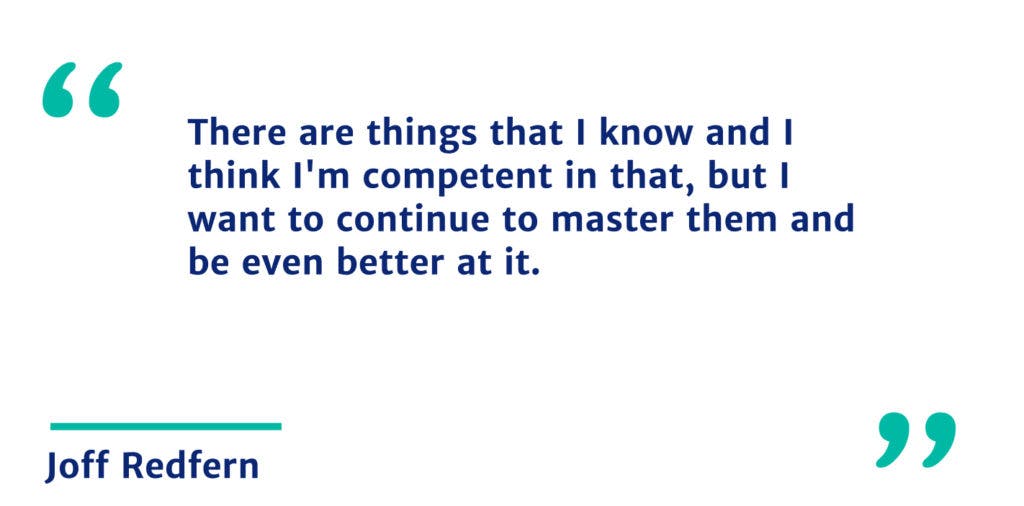
If you haven’t ever watched this documentary Jiro dreams of sushi, it’s amazing. And it talks about this 85 years old, three-star Michelin-rated chef who has a 12-person restaurant in a subway in Tokyo. The guy’s on top of his game. He’s an amazing sushi chef. And yet in the documentary, he’s like, ah, I just, I haven’t learned all there is to learn, and I need to get better at this and that. And it’s just; this is really a story of just mastery.

So right now, one of the things that I continue to focus on is really strategic decision-making. Strategy to me is how you navigate a competitive landscape, and well, I’ve really benefited from having amazing mentors in that space. I would say I learned a ton from Reid Hoffman, founder of LinkedIn, from Jeff Weiner, who was the CEO that took them public, the founders about lasting or amazing strategists.
How do you continue to improve upon the great strategies that we have? And a lot of that is reading. I am a voracious reader. I love to read. Whenever I can, I’m reading up on a strategy that might be going back to Michael Porter or looking at more current books. We’ve recently had a chance to spend some time with Hamilton Helmer, who wrote Seven Powers. And I thought his book was quite good. So I would say, reading and just chatting with people, lots of friends. I frequently will reach out to friends over LinkedIn and say, Hey, I’m trying to do this, and I think you’ve got some experience there. How do you do it? If you give me 20 minutes, I’ll tell you exactly what I’m doing. If you tell me exactly what you’re doing, that winds up to be really helpful.
We’ll be back again next week with even more of the latest insights from the Product Management world. Stay tuned for more!
Listen to our episodes on your favorite platform
Stay tuned for new episodes
By sharing your email, you agree to our Privacy Policy and Terms of Service

